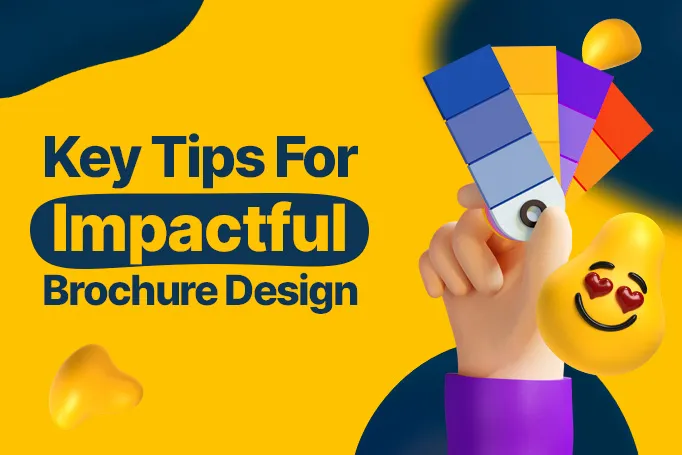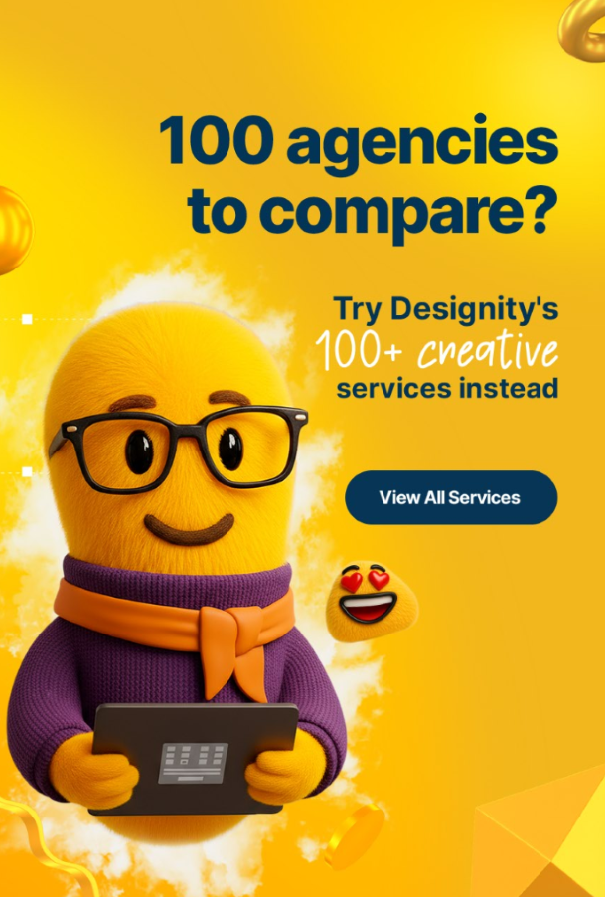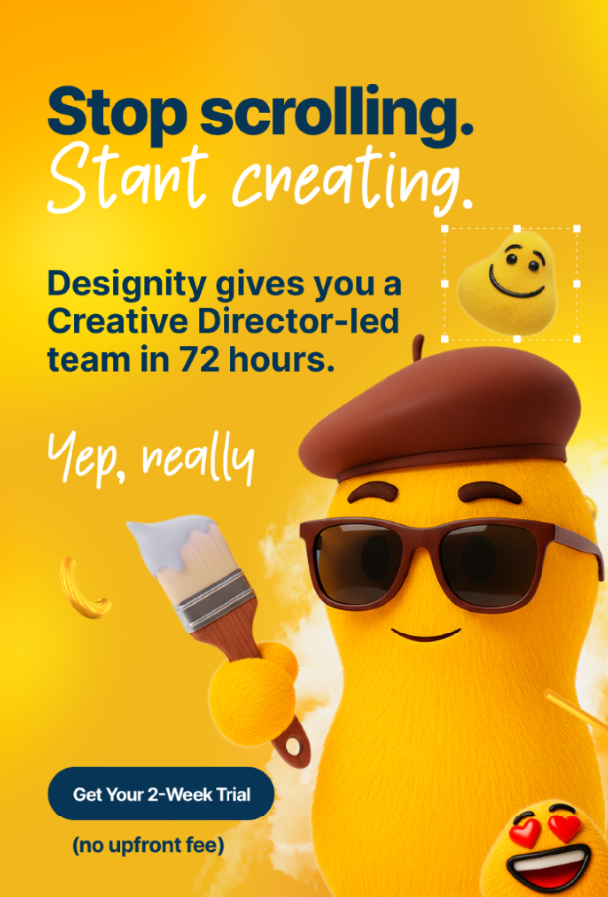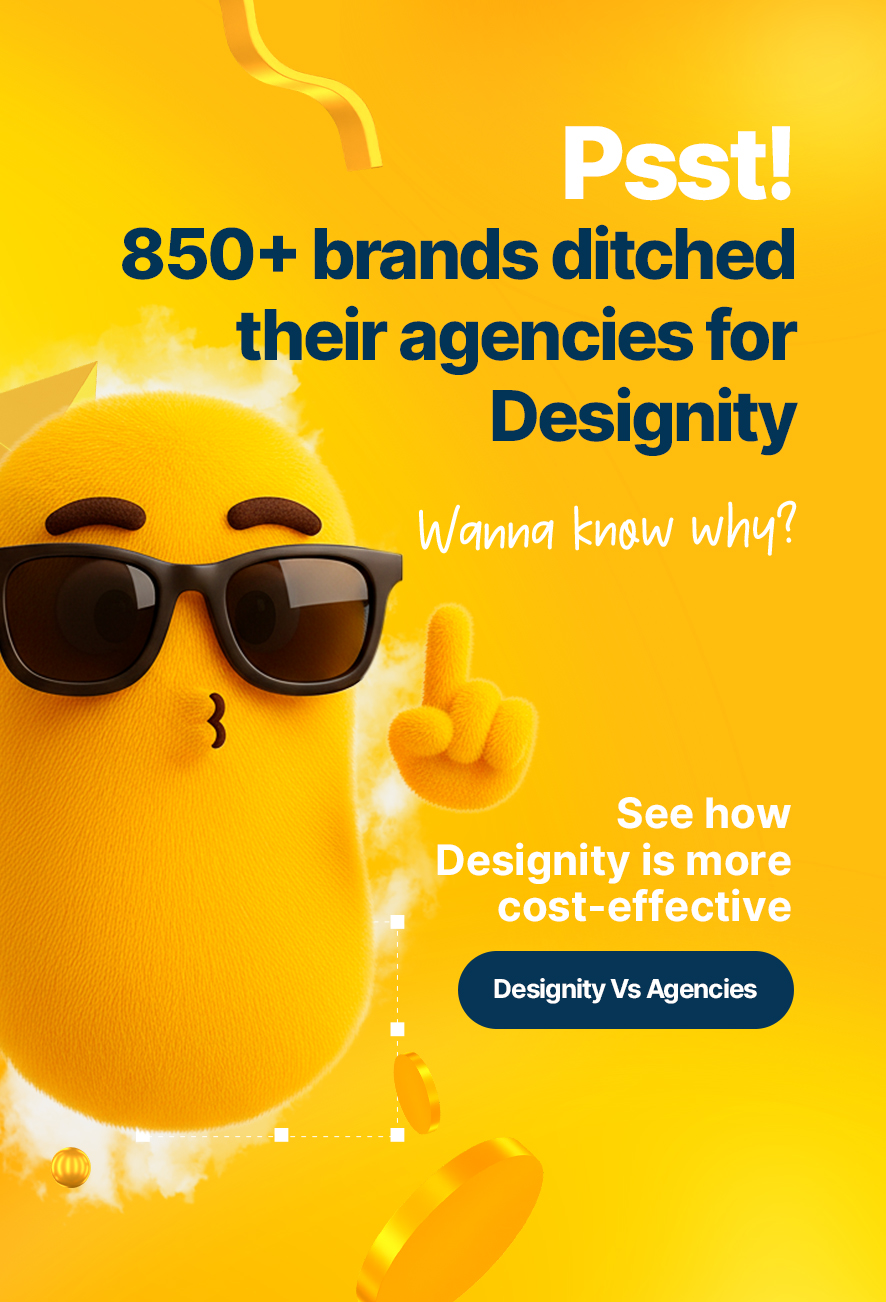Even though it seems like everything is online and scrollable these days, a good, well-designed brochure remains one of the most powerful marketing tools a brand can have in its arsenal.
Brochures offer a tangible and physical experience that just can’t be replicated online and anything a potential customer can touch with their own hands (and smell, if they’re weird like that) is going to be more memorable than something they can click away from in an instant to check their email instead.
Brochures are still in demand is what we’re saying, and clients are requesting them every day. So, if you want to make yourself an indispensable asset to their marketing strategy, mastering the art of designing brochures is a skill you don’t want to pass up.
If you don’t have a brochure design project under your belt yet (or if you want a refresher), this blog is going to lay out 9 tips for impactful brochure design so you can start creating stunning, attention-grabbing brochures that leave a lasting impression on your client’s target audience!
Take a deep breath and embrace the fresh-printed smell with us!
Brochure Design Secrets
Whether it’s a physical or digital brochure online, here are nine of our favorite design secrets to create custom brochures that no one in their right mind would toss away.
1. What’s the Goal?
Before you even sit down to start sketching things out and customizing your design, stop and ask yourself:
What objective(s) is your client’s brochure going to achieve?
It’s important to know what your client’s goals are as well as what their target audience is looking for so that you can effectively plan your design in a way that resonates with them.
Talk your client through developing a target audience persona before you get started. Ultimately, this is about communicating with their audience, so knowing who you’re speaking to is very important.
2. Is the Brand Ready?

Okay, one more prep step before you can jump in and start designing brochures for your client.
See if the brand is ready.
They should, at the very least, have a logo and brand colors.
If the client has a brand guide, then that’s perfect, be sure to integrate its guidance.
If they don’t have one, however, politely suggest creating one before working on the brochure! The last thing you want is to spend weeks on a brochure, only to realize it’s off-brand after the print run has completed.
Be a pal and refer them here to get brand ready.
3. Into the Fold
The one thing everyone knows about brochures is that they fold. But did you know how many kinds of folds brochure creators have available to them?
From the simplest bi-fold to gatefolds, roll-folds, or double-parallel folds, use the brochure’s folds to your advantage.
Folds should complement your design and keep your reader going in the right direction.
Are you telling a story? Utilize a Z-fold that will help you guide the narrative.
Need a step-by-step tutorial? An accordion fold can help you present the information in a step-by-step manner, with each fold revealing a new element.
You can also use folds for surprise reveals, encouraging the reader to keep going for more!
4. Tighten Up Your Copy
In general, concise bits of copy work best for brochures or any other booklet your client wants their potential customers to read.
Think about what the target audience wants to see and be sure that the copy addresses it in a short, right-to-the-point manner. Long blocks of text might have them scanning away from valuable information or putting the brochure down altogether and that’s not what you want.
Aim for simple headers and statements to make everything scannable and keep the potential customer reading.
Placement matters too, so when you’re creating brochures, be sure to place the copy where it can be easily scanned and where it helps the narrative flow.
5. Limit the Typefaces

If your client has a brand guide, they probably already have some approved fonts so it’s a good idea to stick to their guidelines.
Even if they want to branch out into different typefaces for their brochure project, gently inform them that a brochure isn’t the place to go crazy with the fonts. It’s best to stick to one or two and, if you need more variation in your text, use bolding, size, or placement to create hierarchy.
A heading, subheading, perhaps a third-level subheading, and body copy will do just fine.
6. Get to the Point
We see too many brochures that start with information about the company and ramble on and on before getting to the point.
While it is important to have some company info so that potential customers can look your client up or contact them, too much information detracts from the goal.
If a curious reader picks up a brochure, that curiosity should be sated by immediately discovering the products or services the brochure in their hand is offering and understanding their value from the very first page.
Our recommendation? Leave only the necessary company details, find the chase, and then cut to it.
7. Make it User-Friendly
By user-friendly, we’re talking about what would make reading this brochure an easy, pain-free experience. What would make it enjoyable to read?
Think about what imagery, colors, tone of voice, etc., would work best on your client’s target audience. Incorporate those into your design to keep your readers engaged.
Choose your colors carefully as well. Colors should complement each other and your client’s brand and not be too garish to ensure easy reading. If your client has brand colors, use them to keep their brochure recognizable, but don’t be afraid to venture out into secondary and tertiary shades for more variety and to make your design more appealing.
Reading through your client’s brochure should be a seamless experience as well. Have your design elements guide the reader from page to page with a clear narrative that is built around one goal.
And once the reader makes it to the end, make it easy for them to respond. Add an obvious call to action at the end and be sure to include contact information for your client at the end so that they don’t have to flip back.
If they would work with your client’s target audience, QR codes that lead to landing pages or their home website are good ideas to include here too, as well as social media handles to enable potential customers to start following your client’s brand.
8. Use High-Quality Photos
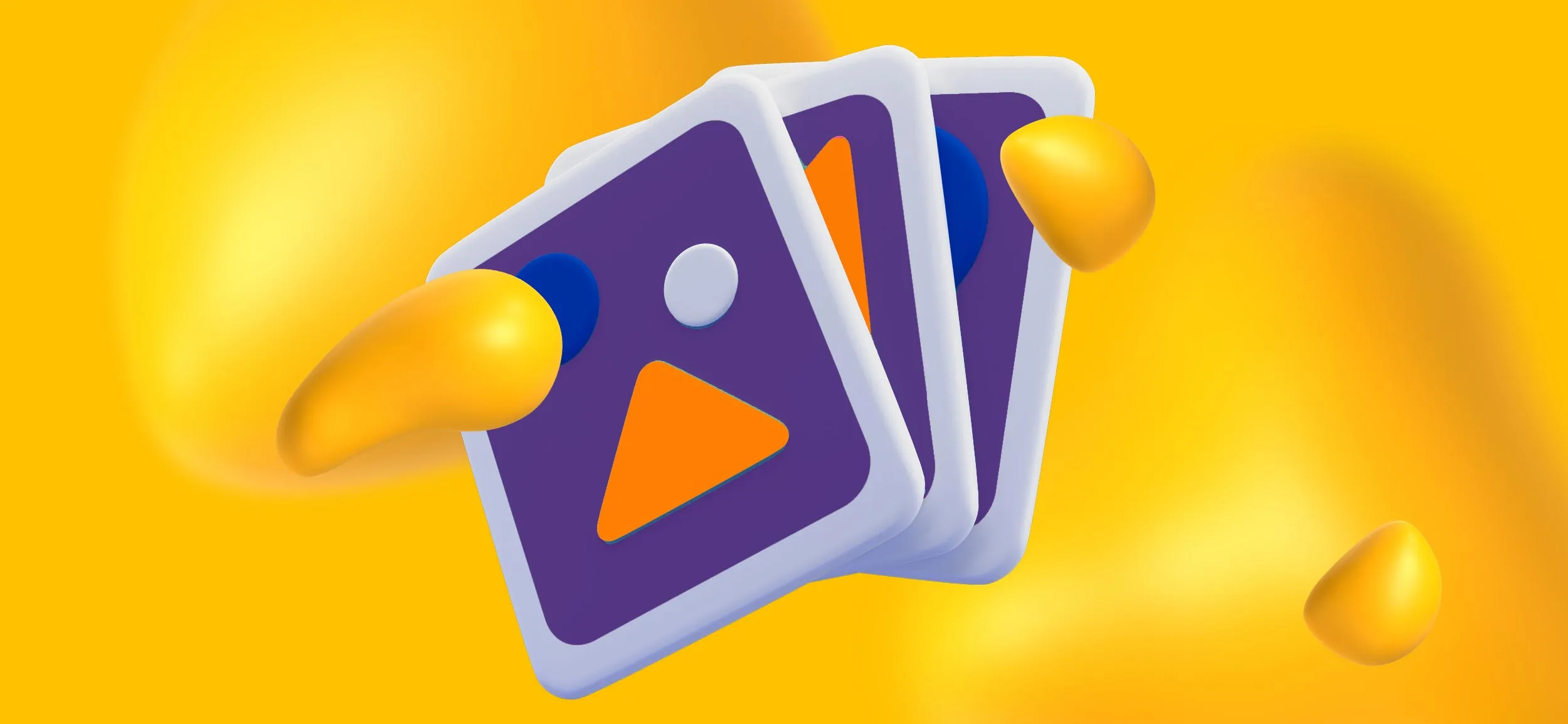
Any professionally designed brochure has great visuals!
If your client wants to use photos instead of illustrations, then be sure to use the right ones! No one wants to flip through a bunch of obvious stock photos.
Suggest photos with an obvious central point of focus that don’t look too cluttered or busy.
And if your client doesn’t want to spring for photoshoots and insists on stock photos, then do the best you can and pick the least stock image-y stock images you can find so that your brochure doesn’t have a forced, generic feel to it.
You’re shooting for authenticity and credibility here.
9. Be One-of-a-Kind
If you want to create an effective, professional brochure, one that engages your readers and encourages them to read the whole thing instead of tossing it away, then you’ve got to get creative.
Think about the target audience. What would keep them reading? What imagery do they want to see, what copy will persuade them to take action?
Be creative! Bring out your inner artist, lean on your many years of design experience, and don’t be afraid to try new things!
Sketch out some prototypes and get some user feedback from your client as well as other designers and tweak where necessary until you’ve got a stunning brochure that is truly a work of art!
<div class="c-blog_comp-cta cc-component-2"><div class="c-blog_comp-cta-left"><div class="c-blog_comp-cta-left-wrap"><img src="https://global-uploads.webflow.com/61cdf3c5e0b8155f19e0105b/63695243d096983691046ac3_Potential-Creative.png" loading="lazy" alt="" class="c-blog_comp-cta-left-img"></div></div><div class="c-blog_comp-cta-right cc-dark"><div class="c-blog_comp-content"><div class="c-text-wrapper cc-mb-32"><div class="c-title-4 cc-bold"><strong>Like to work as a freelancer with consistent income?</strong></div></div><div class="c-text-wrapper"><div class="c-text-2">Designity's collaborative model is designed to give you all of the perks of being a freelancer without the income instability.<br></div></div></div><div class="c-blog_comp-wrapper"><a href="http://designity.com/creatives" target="_blank" class="c-button w-button"><strong>Join Our Creative Community</strong></a></div></div></div>
The Power of Professional Design
We hope these expert tips come in handy the next time a brochure template project comes down the pipeline!
By showcasing your professional work, you can make your clients quickly recognize the value of a design expert and think twice about using a free brochure maker for their printing needs.
Until then, keep creating, keep pushing boundaries, and keep delivering remarkable design!
What’s your favorite brochure design project?
